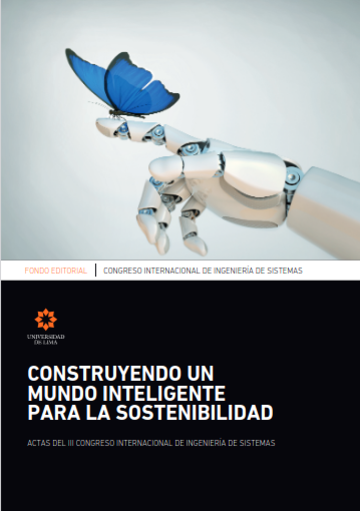Detection of Pathologies in X-Rays Based on a Deep Learning Framework
DOI:
https://doi.org/10.26439/ciis2020.5473Keywords:
chest X-ray, deep learning, CNN, computer vision, computer-aided diagnosisAbstract
The diagnostic process of respiratory diseases requires experience and skills to assess the different pathologies that patients may develop. Unfortunately, the lack of qualified radiologists is a global problem that limits respiratory diseases diagnosis. Therefore, it will be useful to have a tool that minimizes errors and workload, improves efficiency, and speeds up the diagnostic process in order to provide a better healthcare service to the community. This research proposes a methodology to detect pathologies by using deep learning architectures. The present proposal is divided into three types of experiments. The first one evaluates the performance of feature descriptors such as SIFT, SURF, and ORB in medical images with machine learning models as an introduction to the last experiment. The second one evalu ates the performance of deep learning architectures such as ResNet50, Alexnet, VGG16, and LeNet. Finally, the third one evaluates the combination of deep learning and machine learn ing classifiers. Furthermore, a novel chest X-ray dataset called PathX_Chest, which contains 2,200 images of ten different classes, is presented. In contrast with the state of the art, good results were obtained in the three different approaches. However, the best performance was achieved by combining deep learning and machine learning: a 99.99 % accuracy was obtained with the combination of ResNet50 and SVM classifier. This methodology may be used to develop a CAD system to help radiologists have a second opinion and a support during the diagnostic procedure
Downloads
References
Bay, H., Tuytelaars, T & Van Gool, L. (2006). SURF: Speeded Up Robust Features. Retrieved from https://www.vision.ee.ethz.ch/~surf/eccv06.pdf
Davida, B. (2018). Bag of Visual Words in a Nutshell. Towards Data Science. Retrieved from https://towardsdatascience.com/bag-of-visual-words-ina-nutshell-9ceea97ce0fb
Dong, Y, Pan, Y., Zhang, J., & Xu, W. (2017) Learning to Read Chest X-Ray Images from 16000+ Examples Using CNN. IEEE/ACM International Conference on Connected Health: Applications, Systems and Engineering Technologies (CHASE), 51-57.
France, K., & Jaya, A. (2019). Classification and retrieval of thoracic diseases using patch-based visual words: A study on chest x-rays. Biomedical Physics & Engineering Express. https://doi.org/10.1088/2057-1976/ab5c7c
Goodfellow, I., Bengio, Y. & Courville, A. (2016). Deep Learning. MIT Press. Retrieved from http://www.deeplearningbook.org
He, K., Zhang, X., Ren, S., & Sun, J. (2015). Deep Residual Learning for Image Recognition. Retrieve from https://www.cvfoundation.org/openaccess/content_cvpr_2016/papers/He_Deep_Residual_Learning_ CVPR_2016_paper.pdf
Imágenes Médicas Diagnósticas. (17 de febrero del 2017). La escasez de radiólogos a nivel mundial. https://www.grupoimd.com.co/blog/escacezradiologos-mundial/Kreisman
Krizhevsky, A., Sutskever, I., & Hinton, G. (2012). ImageNet Classification with Deep Convolutional Neural Networks. Retrieved from https://papers.nips.cc/paper/4824-imagenet-classification-with-deepconvolutional-neural-networks.pdf
Lowe, D. (2004). Distinctive Image Features from Scale-Invariant Keypoints. Retrieved from: https://www.cs.ubc.ca/~lowe/papers/ijcv04.pdf
Rahman, T., Chowdhury, M.E.H., Khandakar, A., et al. (2020) Transfer Learning with Deep Convolutional Neural Network (CNN) for Pneumonia Detection Using Chest X-ray. Retrieved from https://arxiv.org/ftp/arxiv/papers/2004/2004.06578.pdf
Rahmat, T.,Ismail, A., & Sharifah, A. (2019). Chest X-ray Image Classification using Faster R-CNN. https://doi.org/10.1016/j.imu.2020.100405.
Rublee, E., Rabaud, V., Konolige, K., & Bradski, G. (2011). ORB: an efficient alternative to SIFT or SURF. Retrieved from http://www.willowgarage.com/sites/default/files/orb_final.pdf
Šarić, M., Russo, M., Stella, M. & Sikora, M. (2019). CNN-based Method for Lung Cancer Detection in Whole Slide Histopatholog y Images. 2019 4th International Conference on Smart and Sustainable Technologies (SpliTech), 1-4.Simonyan, K. & Zisserman, A. (2015). Very Deep Convolutional Networks for Large-Scale Image Recognition. Retrieved from https://arxiv.org/pdf/1409.1556.pdf
Srinivas, M., Debaditya, R., & Krishna M. (2016). Discriminative Feature Extraction from X-Ray Images Using Deep Convolutional Neural Networks. IEEE International Conference on Acoustics, Speech and Signal Processing (ICASSP), pp. 917-921, 10.1109/ICASSP.2016.7471809.


